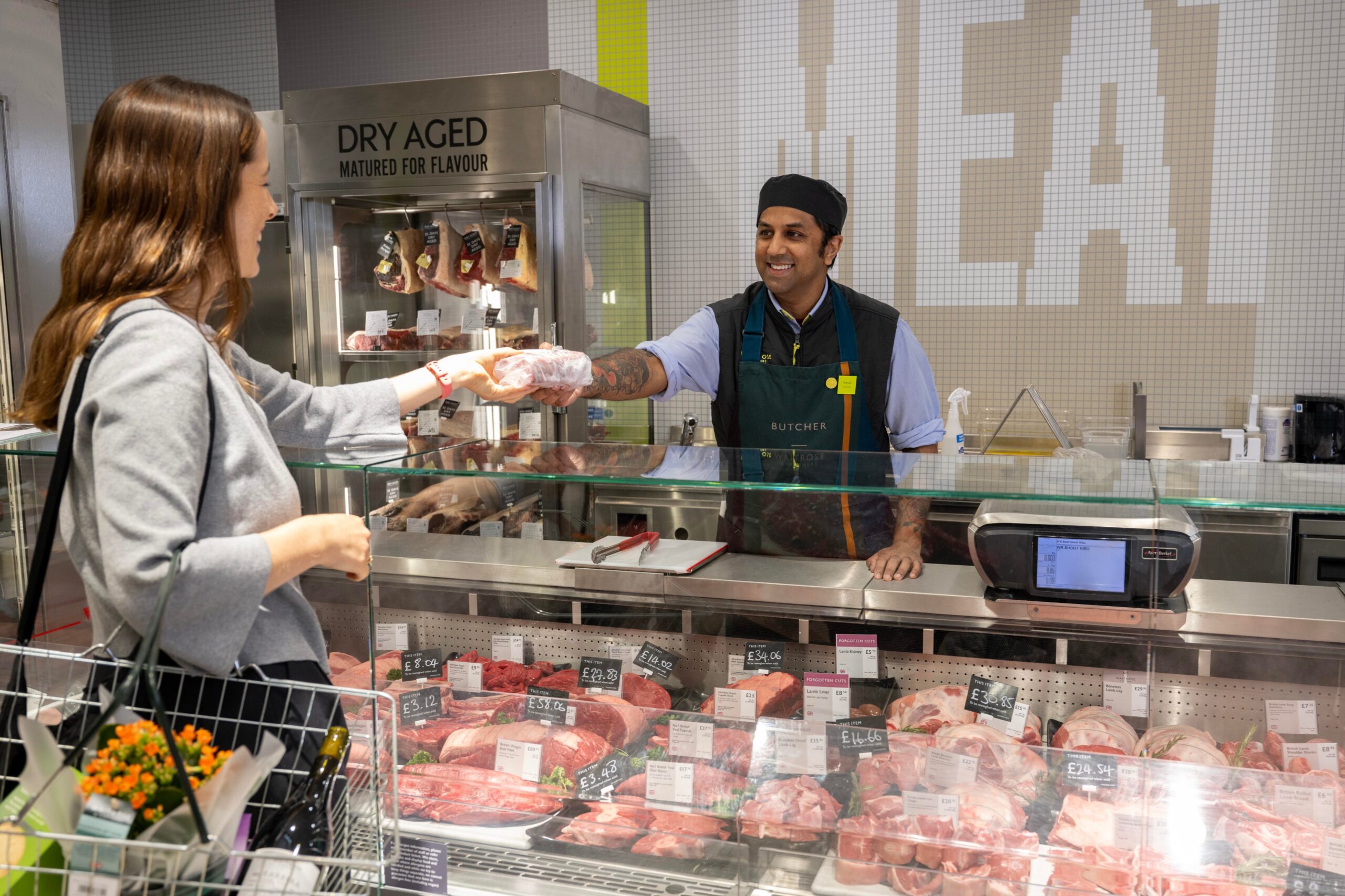How Sharon White left John Lewis ready to regain its former glory
September marks the start of a new chapter for the John Lewis Partnership. After years of financial losses, store closures, redundancies, declining market share and internal upheaval, the owner of John Lewis and Waitrose is hoping to turn the page as it welcomes Jason Tarry as its new chairman. His task? To win back middle England.
Tarry brings with him decades of experience at Tesco, where he played a pivotal role in shaping the grocer’s strategy and success. Now the industry is betting on him to navigate the challenges of a rapidly changing retail landscape and to return the century-old partnership to stability and growth.
For the employee-owned group, recent years have been anything but smooth. It grappled with the impact of Covid-19, which forced temporary store closures and disrupted its operations, and then losses swelled as the subsequent cost of living crisis added further pressure.
Consumers tightened their belts and discretionary spending on items such as homewares and fashion, staples of the John Lewis offering, declined. Waitrose suffered as even wealthier shoppers shunned the upmarket grocer in favour of cheaper alternatives such as Aldi and Lidl, the German discounters.
At the centre of this storm was Dame Sharon White, who took over as chairwoman in 2020, becoming the first woman and the first black person to lead the partnership. White was a leftfield choice, a civil servant who previously had headed Ofcom, the communications regulator, and had no previous retail experience.
However, as Sir Charlie Mayfield, her predecessor, argued at the time, “these are not conventional retail times, nor is the partnership a conventional company”. Instead, she had been hired as “an inspirational leader with the personal and professional skills to ensure the partnership continues to innovate and change”.
• John Lewis bets the house on a return to focusing on retail
White, 57, took on the top job just before Covid struck. Yet even without the challenges of navigating a business through a global pandemic, she already had a hard task ahead of her. Cracks had started to form at the partnership. She inherited a business struggling to find its footing in a modern retail age. It had been slow to respond to the rise of ecommerce, leaving it with too many physical shops and an oversized workforce. Unlike more agile competitors, John Lewis had clung to its traditional model, too afraid to upset its employees and customers, resulting in declining shopper numbers and unsustainable costs.
Moreover, White stepped in just after Mayfield had decided to drastically overhaul the management structure, eliminating individual bosses for John Lewis and Waitrose and creating seven divisions, all reporting directly to her. The internal shake-up had been intended to make the partnership more agile, but in the event it caused disruption as managers adjusted to new roles and responsibilities.
White waited until October 2020 to reveal her business plan, needing time to get to grips with the true impact the pandemic would have on the business and the wider industry. Her turnaround strategy was aggressive. There were cost-cutting measures, such as the closure of underperforming stores, the reduction of the workforce, a focus on streamlining operations and eventually dropping the “never knowingly undersold” price match pledge.
Those moves arguably were necessary, given the financial difficulties that the business was facing, but they were not without their critics. Some argued that the cuts were too deep, undermining the core values of the partnership, which had long prided itself on its commitment to employee welfare and customer service.

Others were critical that during the cost-cutting process, the retail business was not given the attention and support it desperately needed. Instead, the partnership was busy investing in new business areas, including housing, while funding was depleted.
White believed that for the long-term survival of the business, it was vital to create a new income stream and to reduce its reliance on traditional retail. Others disagreed. They argued that John Lewis had lost focus and should have been investing in upgrading its outdated retail operations, making them fit for the future. Someone with a background in retail, they said, would have done that.
Until recently, it seemed as though the critics had won. Instead of getting closer to White’s profit target of £400 million, which she promised would be reached by 2025, revenue slipped and profits turned to losses. Employee morale was lower than ever, the staff bonus was axed and it seemed as though there was no going back for the John Lewis Partnership.
But now, as White prepares to hand over the reins to Tarry, 57, green shoots have started to emerge. Market share at Waitrose has started to recover, thanks to a renewed focus on quality, innovation and value. John Lewis’s fashion and home departments have shown signs of improvement, too, with new collections that have been received well by customers and critics alike. Anna Murphy, the fashion editor at The Times, declared its latest fashion collection as “the best yet”.
• John Lewis Partnership rules out splitting operations
Customer service levels are improving, helped by investment in employee training. John Lewis said that there had been an overall uplift in customer satisfaction scores from 69 per cent last year to 71 per cent of shop visitors being very satisfied, the highest score since the pandemic. Waitrose jumped from 71st to 4th in the UK customer satisfaction index, ranking No 1 for food retail.
Though still a fraction of the £300 million-plus profits regularly reported less than a decade ago, the partnership made a pre-tax profit of £56 million in the year to January 7, having suffered a loss of £234 million the year before. The debt ratio improved to 3.4 times as of March, from 4.4 times in the previous year, thanks to improved cash generation. The company said it had sufficient liquidity of £1.7 billion in place to repay its £300 million bond, maturing in January.
Despite the criticism, White remains steadfast in her belief that the measures were necessary to secure the long-term future of the business. “Every chairman wants to leave the partnership in better shape than they found it and I believe I have achieved that. Back in profit. Strong cashflow. Debt at its lowest level in a generation. A million more customers. Improving customer satisfaction. Waitrose growing market share.”
She said she was pleased “to have steered the partnership through its most challenging period ever, with the support of a great team, and to have put in place solid foundations for its future success. It’s never easy, especially in an employee-owned business, and we’ve tried to make the changes in an open, transparent and humane way.” However, she added that: “In the end, these decisions have given us the firepower to invest in the business.”

So was the nation too quick to judge? One grocery executive said that might be so. “Sharon made some drastic but necessary decisions. She didn’t always get it right, but she was respected by employees and I do think she wouldn’t have been given such a hard time if she had come in with a retail background.
“The other thing worth noting is that John Lewis had a tough time during the pandemic and the cost of living crisis, but Marks & Spencer had been struggling for over a decade. We were all very quick to praise M&S for its turnaround efforts when things started to look up for the business. Maybe we should be more optimistic about John Lewis.”
• Shoppers revolt as Waitrose makes loo rolls smaller
According to another grocery executive, one of the core responsibilities is succession: “I’ve always thought it bizarre when someone sees the failure of an organisation after they leave as a measure of greatness. It’s the opposite.”
While White faced the herculean task of steering the retailer through a storm of challenges, Tarry arrives just as the cogs are beginning to spin in the right direction. With profits inching up and customer satisfaction on the rebound, he takes over a business no longer in crisis mode but still very much in need of a steady hand to guide it back to its former glory. Significant challenges remain and Tarry will need to navigate these carefully as he seeks to build on the foundations laid by his predecessor.
Who is Jason Tarry, the Tesco lifer about to lead John Lewis Partnership?

Jason Tarry, the seasoned executive set to lead the John Lewis Partnership into its next chapter, is no stranger to the rigours of British retail (writes Isabella Fish). With a career spanning over three decades at Tesco, he has become a well-known figure in the industry, admired for his business acumen and calm, considered leadership style.
Hailing from Kent, Tarry’s journey to the top began in the less-than-glamorous trenches of retail, where he started as a graduate trainee at Tesco in 1990. He quickly ascended the ranks, proving his mettle in roles that ranged from head of non-food to group chief commercial officer and eventually as chief executive of Tesco UK and Ireland.
His rise through the company was a testament to his understanding of the retail sector, a blend of hands-on experience and a keen eye for detail. His tenure as chief executive was marked by a focus on building market share and helping to navigate the company through the aftermath of an accounting scandal that had rocked the business. He also played a key role in reducing Tesco’s ranges by up to 30 per cent in what was described as “project reset” under Dave Lewis, the former group chief executive.
As he prepares to step into one of the toughest jobs in retail — chairman of the John Lewis Partnership — many will be watching to see how Tarry, 57, adapts his Tesco-honed skills to the employee-owned company.




Post Comment